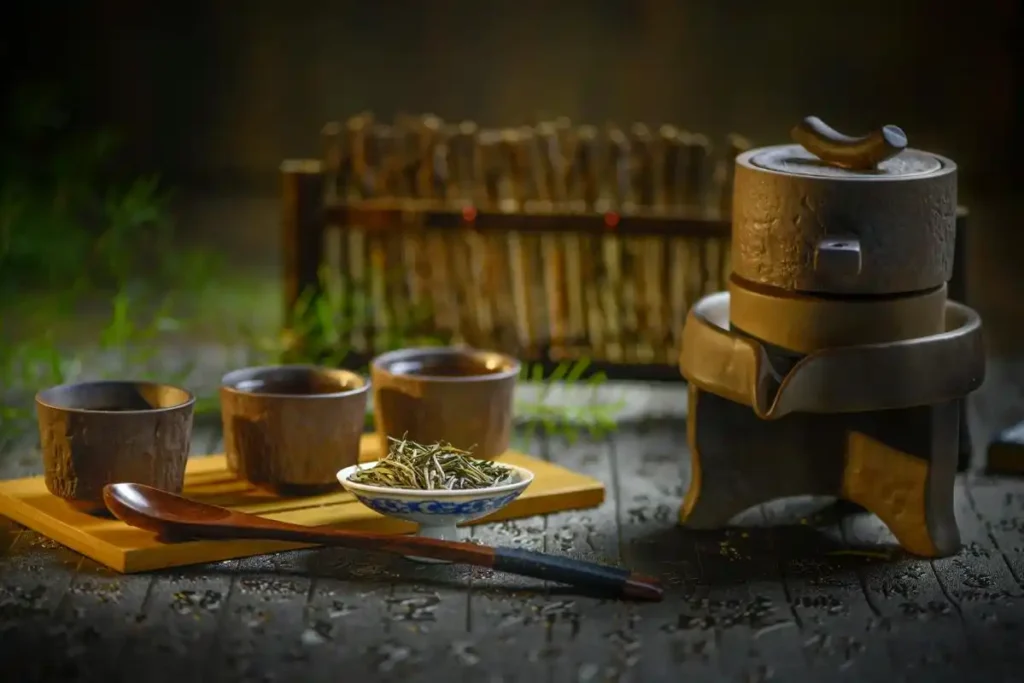Do you understand the basic spirit of the Chinese tea ceremony?

Although there has been a tea ceremony in China since ancient times, there is no clear connotation and extension of the tea ceremony, which leaves a large scope for people to play, and people at all levels can choose different forms and ideological contents of the tea ceremony according to their own situations and preferences from different angles.
Therefore, there is no clear standard for summarizing the basic spirit of the tea ceremony. Lin Zhi’s “Chinese Tea Ceremony” takes “harmony, quietness, joy and truth” as the four meanings of the Chinese tea ceremony, which is very representative and has distinctive characteristics of the times.

和
Confucianism has derived the idea of “the middle way” from the philosophical concept of “Tai He”. Its interpretation of “harmony” is manifested in the whole process of tea activities.
For example, when making tea, it is expressed as “sweet and sour, bitter and astringent, mastering the amount of delay and speed in the right amount” of the beauty of the middle ground; when treating guests, it is expressed as “spring tea as a gift to honor the elders, prepare tea with strong meaning to show strong feelings” of the gift of the Minglun; and in the process of drinking tea, it is expressed as In the process of drinking tea, it manifests itself as the modest etiquette of “Drinking good tea before knowing the depth of the tea, and marveling that it is the best in the grass”, and so on.

静
The Taoist idea of tranquility on the Chinese traditional culture and national psychology is extremely far-reaching, the Chinese tea ceremony is precisely through the tea ceremony to create a peaceful atmosphere and an empty spirit of quiet state of mind, in the quiet and nature in the integration of metaphysics, to achieve the state of unity between man and heaven. Confucianism and Buddhism regard “Jing” as the study of returning to one’s roots and restoring one’s life.

怡
In the Chinese Tea Ceremony, “Yi” is the physical and mental enjoyment of the tea ceremony. The Chinese Tea Ceremony is a way of enjoying both the elegant and the vulgar, which is reflected in the casualness of daily life. People of different status, different beliefs and different cultural levels have different pursuits for the tea ceremony.
Historically, the princes and nobles said the tea ceremony: focus on the “tea of the precious”, intended to show off power, boast of wealth and elegance; literati and scholars said the tea ceremony focus on the “tea of the rhyme”, intended to send the feelings, and stimulate the literature; Buddhist tea ceremony focus on the “tea of virtue”, intended to send the feelings, and stimulate the literature; Buddhist tea ceremony focus on the “tea of the virtue”, intended to send the feelings, and stimulate the literature; Buddhism is a way of tea ceremony. The Buddhist tea ceremony focuses on the “virtue of tea”, which is meant to drive away sleepiness and refresh the mind, and to realize Zen and the Way, and to see the nature of Buddha; the Taoist tea ceremony focuses on the “merit of tea”, which is meant to sip the tea and nourish the health of the people, and to preserve the life of the people, and to make them immortal; and the common people tea ceremony focuses on the “taste of tea”, which is meant to remove fishy smells and to make the people feel good. The common people talk about “the flavor of tea”, which is to remove fishy and greasy, to cleanse the thirst and to enjoy life.

真
“Truth is the ultimate pursuit of the Chinese tea ceremony. Truth is originally a philosophical category of Taoism. In the philosophy of Laozhuang, true and “heaven”, “nature” and other concepts similar to the true nature, nature, so the pursuit of Taoism “back to basics”.
Chinese tea ceremony in the tea ceremony when the “real”, not only includes tea should be real tea, real incense, real flavor; the environment is the best real water; hanging the best calligraphy and painting is the best real works of art; with the best utensils are real bamboo, real wood, real pottery, real porcelain.
In addition, it also includes treating people with sincerity, honoring guests with true feelings, speaking with sincerity, and being in a state of mind to be really free. In short, every step of the tea event should be serious, every link is required to be true.
